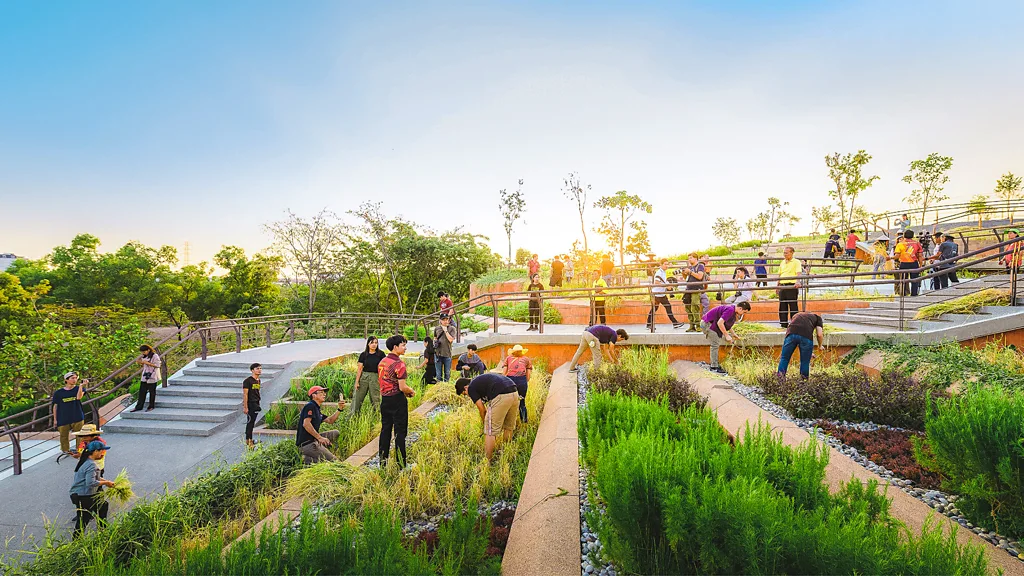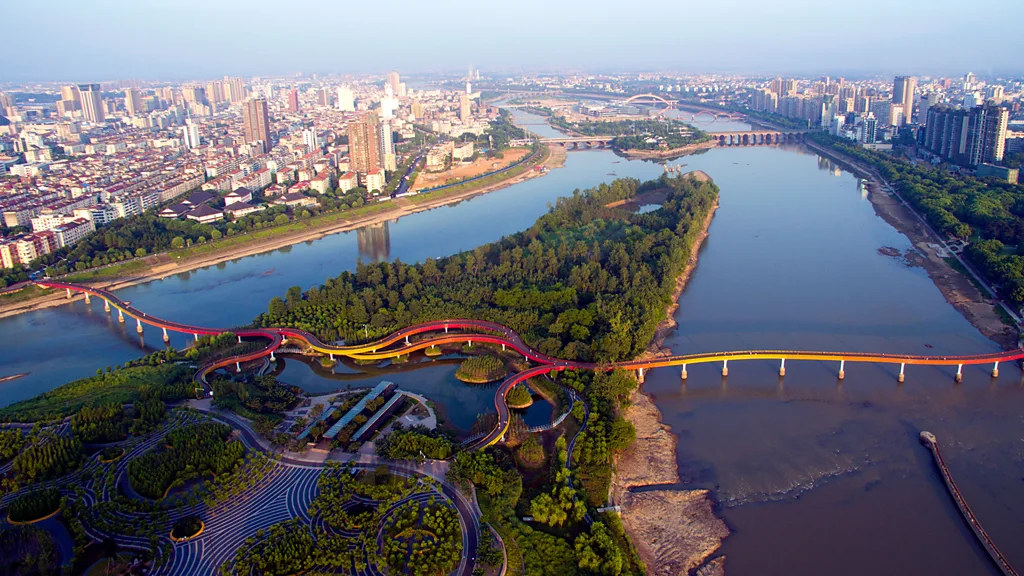
Bangkok, Thailand – As cities around Asia grapple with the increasing frequency and severity of flooding, innovative solutions are emerging that draw on ancient agricultural practices. Rice terraces, which have been a staple of farming in Asia for over 5,000 years, are now inspiring modern urban design strategies to manage rainwater and mitigate flood risks.
Kotchakorn Voraakhom, a landscape architect from Bangkok, has turned her childhood memories of playing in floodwaters into a mission to enhance flood resilience in her city. The catastrophic floods of 2011, which affected millions in Bangkok and resulted in over 800 deaths, underscored the urgent need for improved flood management. In response, Voraakhom founded Landprocess, a firm dedicated to integrating nature-based solutions into urban planning.

One of her most ambitious projects is the green roof at Thammasat University, which draws directly from the principles of rice terraces. This rooftop farm, the largest of its kind in Asia, features 7,000 square meters dedicated to organic farming. The design incorporates multiple tiers of paddy fields that capture rainwater, while four ponds around the building collect and store runoff. On dry days, the stored water is used to irrigate the rooftop crops, and the system is powered by solar panels. This approach not only reduces runoff but also lowers indoor temperatures by 2-4°C during Bangkok’s hot summers.
Rice terraces, found across Asia from China to the Philippines, are built to follow natural contour lines, allowing them to effectively capture and retain rainwater. These terraces help reduce soil erosion, improve water retention, and support crop growth. This ancient knowledge is being adapted to contemporary urban settings to address the challenges posed by intense rainfall and flooding.
In China, the “sponge city” concept has been adopted as a national strategy to manage stormwater and reduce flooding. Professor Yu Kongjian of Peking University, a leading proponent of this approach, has implemented over 500 “sponge city” projects incorporating terracing elements. Notable examples include Yanweizhou Park in Jinhua and Shanghai Houtan Park. These projects use terracing to slow down and filter rainwater, with Yanweizhou Park reducing the annual maximum flood level by up to 63% compared to conventional designs.

In Vietnam, architect Doan Thanh Ha has integrated rice terrace-inspired designs into eco-friendly buildings. His projects include a three-storey home with a rooftop designed to grow crops and a floating house made of bamboo for flood-prone areas. These designs not only address immediate flood risks but also contribute to the preservation of local ecosystems and biodiversity.
While the use of green infrastructure offers promising solutions, integrating these methods into densely populated urban areas presents challenges. Cities like Hong Kong and Tokyo have combined green infrastructure with traditional grey infrastructure, such as underground storage tanks and drainage systems, to manage stormwater effectively. The balance between green and grey solutions is a topic of ongoing debate, with some experts advocating for a hybrid approach to address extreme weather events.
Urban planners and engineers are exploring ways to incorporate the principles of rice terraces into various settings. For example, Hong Kong is considering rain gardens and terraced designs as more cost-effective alternatives to expensive concrete tunnels. Such solutions are particularly relevant for cities with steep terrain, where rainwater can be managed more effectively using terraced designs.
In conclusion, the adaptation of rice terrace techniques for modern urban flood control represents a return to time-tested methods that harmonize with natural processes. As cities face the dual challenges of rapid urbanization and climate change, these ancient practices offer valuable lessons in managing water and building resilience. Embracing such nature-based solutions could provide a sustainable path forward, helping cities to better cope with the unpredictable impacts of climate change.




